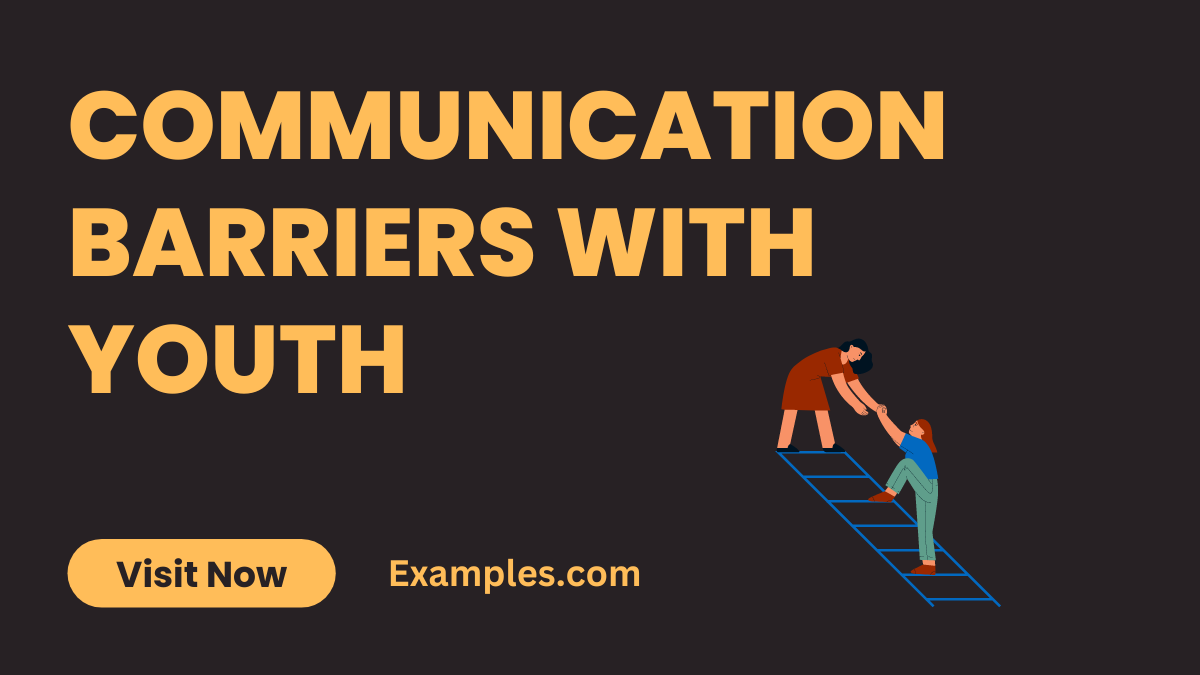19+ Communication Barriers with Youth Examples
Unlock the secrets to bridging Communication Barriers with Youth in this comprehensive guide. Navigating the intricacies of effective communication is crucial, and this article dives deep into real-life Communication Examples. Explore strategies to connect authentically, understand common challenges, and gain insights into fostering positive interactions with the younger generation. Elevate your communication skills and build meaningful relationships with the exclusive examples shared in this must-read guide.
What is Communication Barriers with Youth?
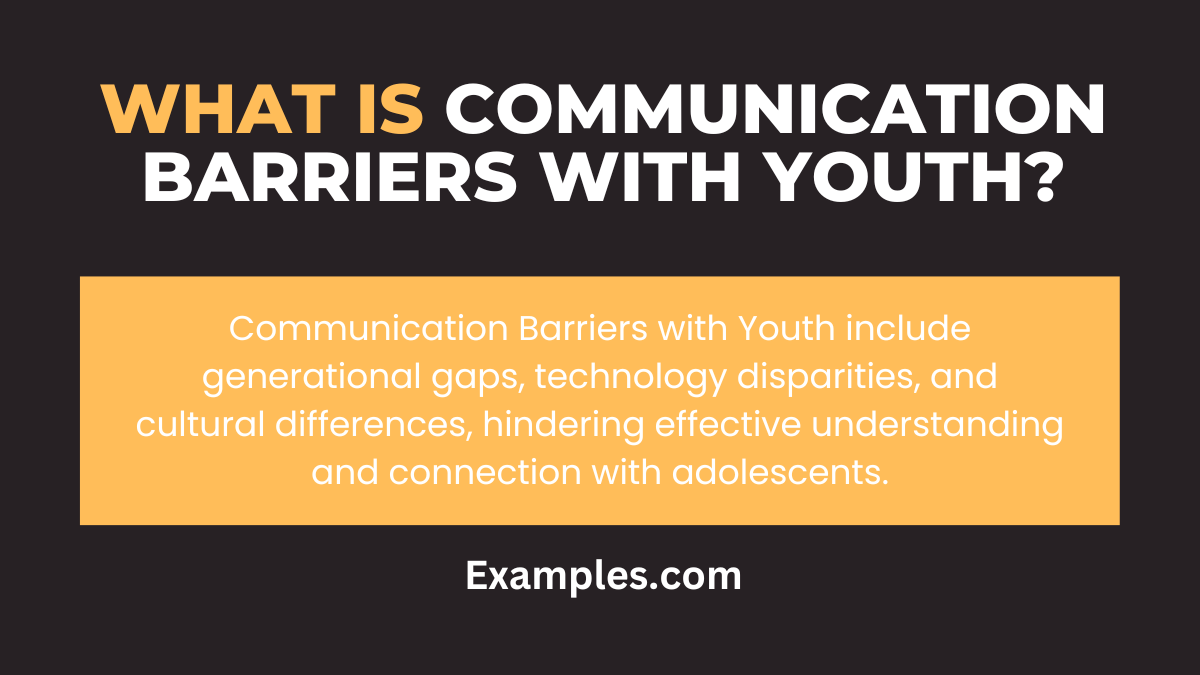
In simple terms, Communication Barriers with Youth refer to obstacles that hinder effective interaction between adults and young individuals. These hurdles can arise from differences in language, generational gaps, or varying perspectives. This article elucidates the clear meaning of these barriers, providing a straightforward definition. Gain a comprehensive understanding of the dynamics involved in communicating with the youth, breaking down complex concepts into easily digestible insights.
Best Example of Communication Barriers with Youth:
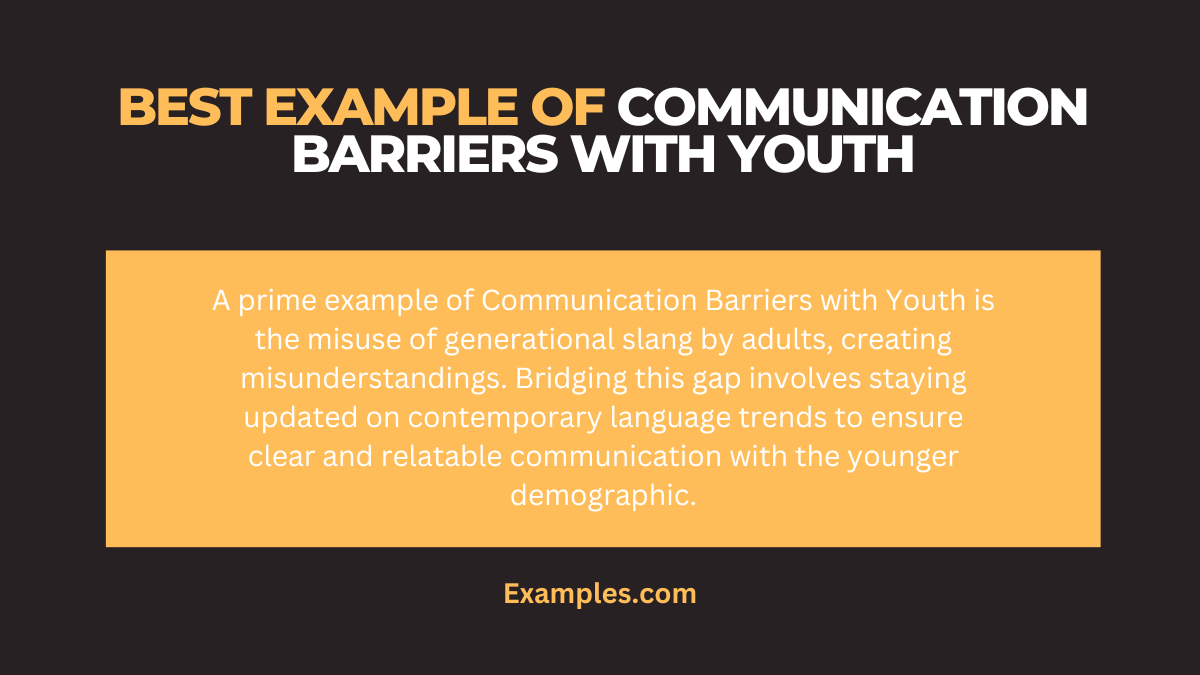
One prevalent example of Communication Barriers with Youth involves the use of outdated or unfamiliar language by adults. Often, older generations may unintentionally employ expressions or slang that confuses younger individuals. This article delves into the intricacies of this scenario, offering a detailed explanation of how linguistic disparities can lead to misunderstandings. Explore real-life instances, understand the impact on communication, and uncover strategies to bridge these generational language gaps effectively.
20 Communication Barriers with Youth Examples:
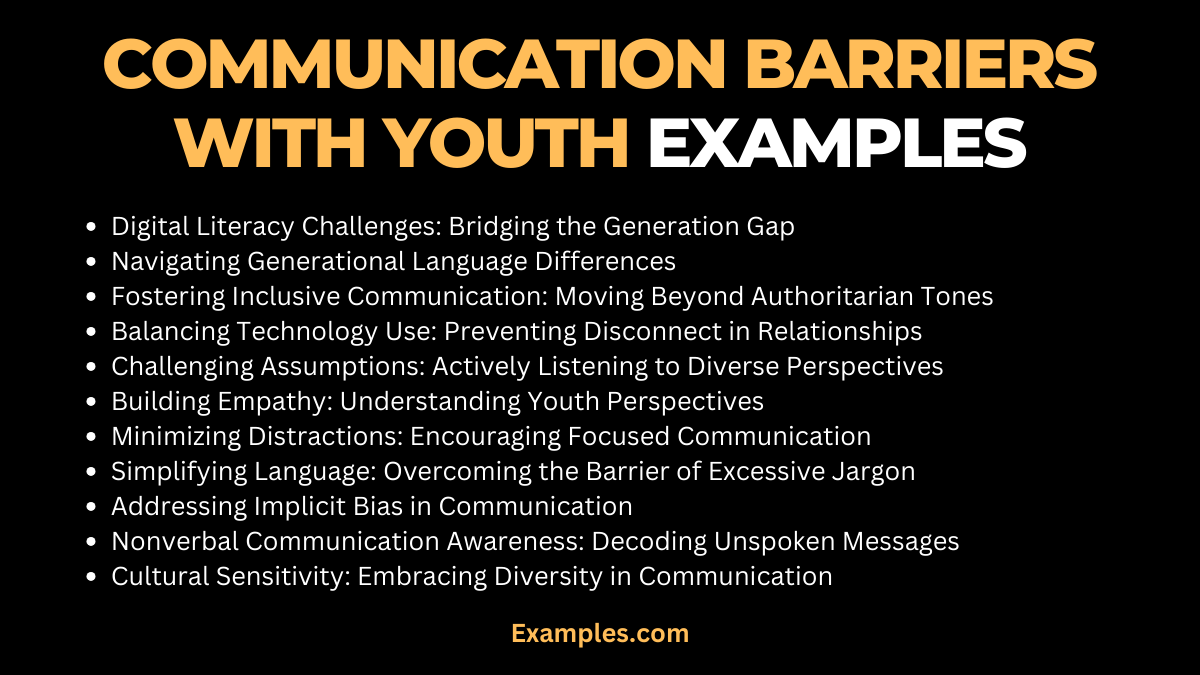
Unlock insights into the complex dynamics of youth communication with this comprehensive guide featuring 20 Communication Barriers with Youth Examples. Discover practical strategies to navigate these obstacles effectively and enhance connections.
- Digital Divide: When adults struggle with technology, creating a gap in understanding. Bridge this gap by embracing digital tools and seeking guidance.
- Generational Slang: Differences in language can hinder effective communication. Navigate this barrier by actively learning and adapting to contemporary slang.
- Authoritarian Tone: Speaking in a dominating manner can discourage open dialogue. Promote openness by using a more collaborative and inclusive tone.
- Technology Dependency: Overreliance on gadgets can create a disconnect. Encourage face-to-face interactions to foster genuine connections.
- Unwarranted Assumptions: Assuming shared experiences may lead to misunderstandings. Clarify assumptions by actively listening and seeking diverse perspectives.
- Lack of Empathy: Insufficient understanding of youth perspectives. Enhance empathy by actively engaging in their experiences and concerns.
- Multitasking Distractions: Diverted attention during conversations can create barriers. Encourage focused communication by minimizing distractions.
- Excessive Jargon: Complex terminology can alienate young individuals. Simplify language for better comprehension and engagement.
- Implicit Bias: Preconceived notions may affect communication. Address biases by recognizing and challenging them to foster unbiased dialogue.
- Overlooking Nonverbal Cues: Ignoring body language signals may lead to misunderstandings. Pay attention to nonverbal cues to understand unspoken messages.
- Lack of Cultural Awareness: Ignoring cultural differences can hinder understanding. Promote cultural sensitivity by embracing diversity and learning about various backgrounds.
- Assumption of Tech Savvy: Presuming all youth are tech-savvy may lead to miscommunication. Assess their comfort level with technology to tailor interactions.
- Limited Feedback Channels: Lack of varied communication channels may restrict engagement. Utilize diverse platforms to encourage participation and feedback.
- Parental Expectations: Imposing expectations based on parental perspectives. Encourage open dialogue about expectations to foster understanding.
- Inflexibility in Communication Style: Rigidity in approach may limit effective engagement. Adapt communication styles to suit the preferences of the youth.
- Social Media Missteps: Misusing social media can lead to misunderstandings. Educate adults on responsible social media use to build trust.
- Failure to Acknowledge Concerns: Ignoring youth concerns can lead to disconnection. Create a safe space for them to express concerns without judgment.
- Lack of Active Listening: Inattentiveness impedes understanding. Cultivate active listening skills to demonstrate genuine interest in their thoughts.
- Fear of Judgment: A fear of being judged may hinder open communication. Foster a non-judgmental environment to encourage open expression.
- Ignoring Mental Health: Neglecting mental health concerns creates a barrier. Prioritize mental health discussions to show support and understanding.
Common Barriers to Communication with Youth:
Uncover the intricacies of connecting with the younger generation by understanding and overcoming Common Barriers to Communication. This guide explores diverse challenges, offering practical strategies for effective interaction.
- Mismatched Expectations: Divergent expectations can impede communication. Align expectations through open dialogue to foster understanding.
- Peer Influence Impact: The influence of peers may overshadow adult communication. Build rapport by acknowledging and respecting peer dynamics.
- Fear of Judgment: A fear of judgment can stifle open expression. Promote a non-judgmental environment to encourage honest communication.
- Time Constraints: Busy schedules can hinder meaningful conversations. Prioritize quality time and create dedicated spaces for open communication.
- Technology Overload: Excessive screen time may create distractions. Establish tech-free zones for focused discussions and bonding.
- Differing Communication Styles: Varied styles can lead to misunderstandings. Adapt your approach to suit the preferred communication styles of the youth.
- Interference from External Factors: External influences may disrupt conversations. Choose quiet spaces to minimize external distractions and enhance focus.
- Stereotyping Challenges: Stereotypes can create barriers in understanding. Challenge stereotypes through open-minded conversations and genuine curiosity.
- Overemphasis on Advice: Constant advice can hinder open dialogue. Balance advice with active listening to encourage two-way communication.
- Inadequate Emotional Expression: Limited emotional expression may lead to misunderstandings.
Communication Barriers with Youth at Present:
Discover the evolving landscape of communication barriers with youth in the present day. This insightful guide explores contemporary obstacles, providing strategies to foster meaningful connections despite the unique challenges faced.
Social Media Overload: Manage virtual interactions for balanced engagement.
Zoom Fatigue: Combat exhaustion with short breaks in online sessions.
Information Overload: Promote mindful information consumption.
Influencer Influence: Foster critical thinking to navigate peer pressure.
Emoticon Misinterpretation: Clarify emotions using words alongside emojis.
Instant Gratification Expectation: Cultivate patience through thoughtful communication discussions.
Cyberbullying Concerns: Address online harassment in safe spaces, promoting digital resilience.
Filter Bubbles: Encourage diverse perspectives for inclusive dialogue.
FOMO (Fear of Missing Out): Alleviate stress by promoting self-awareness and gratitude.
Ephemeral Content Challenges: Emphasize long-form communication for deeper understanding.
Effective Communication Barriers with Youth
Unlock the secrets to impactful communication by understanding and overcoming barriers with today’s youth. Learn practical strategies and discover how to engage effectively to build lasting connections.
- Unrealistic Expectations: Setting unattainable expectations may discourage open dialogue. Encourage realistic goal-setting and provide guidance to foster understanding.
- Overemphasis on Authority: An excessive focus on authority can hinder open conversations. Balance authority with empathy to create an environment of mutual respect.
- Technological Overload: Excessive reliance on technology may alienate youth. Integrate offline interactions to create a well-rounded communication experience.
- Fear of Judgment: A fear of judgment can stifle open expression. Promote a judgment-free zone to encourage honest communication.
- Insensitive Language Use: Insensitive language may lead to misunderstandings. Educate on respectful language use to enhance communication.
- Lack of Diverse Perspectives: Ignoring diverse perspectives limits understanding. Encourage sharing diverse viewpoints to enrich conversations.
- Assuming Homogeneity: Assuming all youth share the same experiences can create gaps. Acknowledge individuality and embrace diverse backgrounds.
- Ignoring Mental Health Signals: Neglecting mental health cues creates barriers. Promote discussions around mental well-being for a supportive environment.
- Communication Style Mismatch: Mismatched styles may hinder effective communication. Adapt styles to align with the preferences of the youth.
- Neglecting Personal Development: Overlooking personal growth topics limits engagement
What Types of Communication Barriers with Youth?
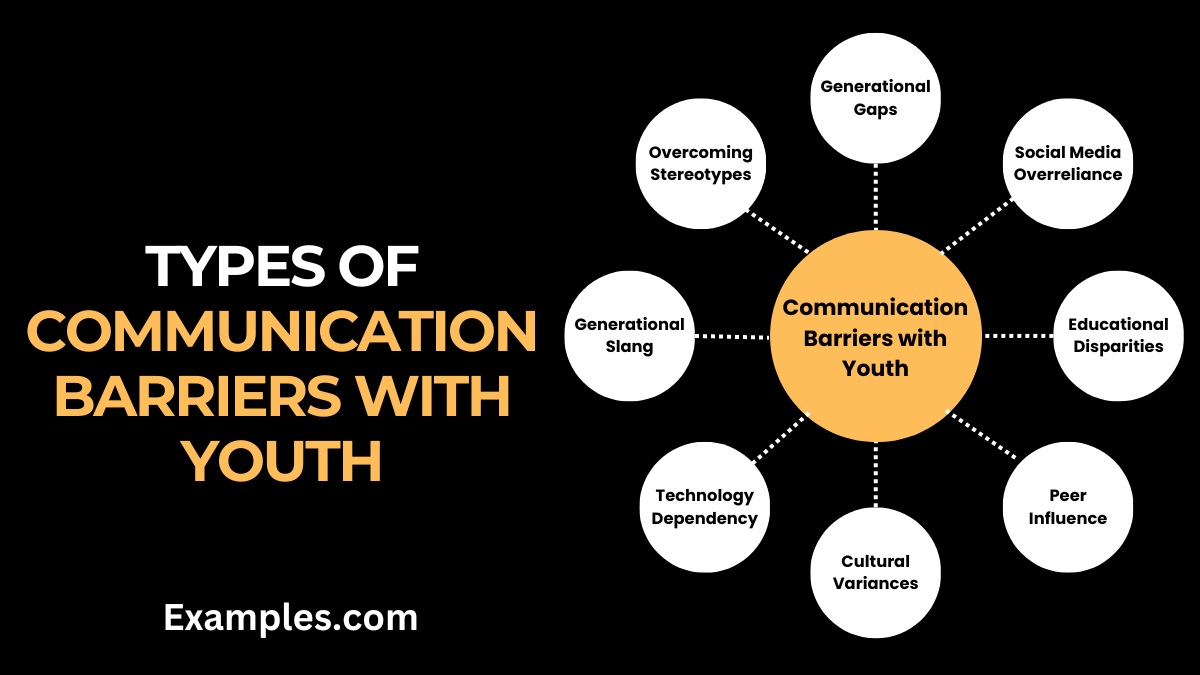
Delve into the multitude of obstacles hindering effective communication with young individuals. This concise guide explores various types of communication barriers with youth, offering succinct insights and actionable solutions.
- Generational Gaps: Differences in perspectives due to age disparities hinder smooth communication. Bridge gaps through open dialogue and shared experiences.
- Social Media Overreliance: Excessive dependence on digital platforms may limit face-to-face interactions. Encourage diverse communication methods for a well-rounded connection.
- Educational Disparities: Varied educational backgrounds can impact understanding. Tailor communication to accommodate diverse levels of education for clarity.
- Peer Influence: External pressures from friends may shape communication preferences. Adapt approaches to align with positive peer influence for effective engagement.
- Cultural Variances: Diverse cultural backgrounds lead to varied communication styles. Embrace cultural sensitivity to foster inclusive and understanding conversations.
- Technology Dependency: Relying heavily on gadgets may hinder traditional communication. Balance technology use with offline interactions for holistic connection.
- Generational Slang: Evolving language trends create linguistic barriers. Stay updated on current slang to ensure clear and relatable communication.
- Overcoming Stereotypes: Preconceived notions based on stereotypes impact interaction. Challenge stereotypes actively for unbiased and open dialogue.
- Digital Literacy Gaps: Varied levels of tech proficiency can create disparities. Promote digital literacy to ensure equal participation in contemporary communication.
- Limited Feedback Channels: A lack of diverse communication platforms restricts engagement. Introduce varied channels to encourage open and multifaceted dialogue
In conclusion, this comprehensive guide on Communication Barriers with Youth delivers actionable insights, real-life examples, and strategies to foster effective connections. By addressing diverse obstacles, from generational gaps to technological disparities, readers gain a profound understanding of youth communication dynamics. Implement the provided examples and tips to break down barriers, enhance relationships, and navigate successful interactions with the younger generation.



